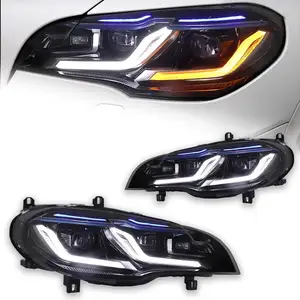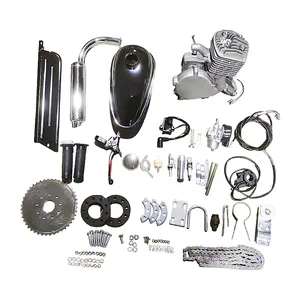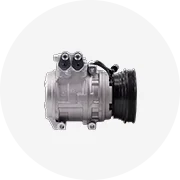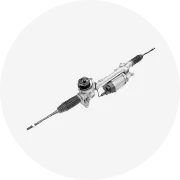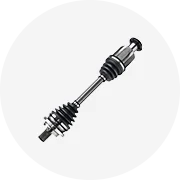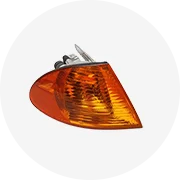Популярное в вашей отрасли




Китай, заводская цена, 14, 16, 18 алмазный шлифовальный диск, лезвие из гранита, мраморное лезвие, песчаник, кварцевый режущий диск
2 142,04 ₽ - 18 431,46 ₽
Минимальный заказ: 1 шт.






Многофункциональная пила
Готово к отправке
34,88 ₽ - 1 992,59 ₽
Минимальный заказ: 50 шт.
Доставка за штуку: 54,80 ₽







Многофункциональный алмазный режущий диск, 4 дюйма, 4,5 дюйма, 5 дюймов, усиленный Циркулярный алмазный пильный диск для резки камня, бетона и плитки
94,65 ₽ - 268,01 ₽
Минимальный заказ: 5 шт.







Лидер продаж в Мексике, лезвия для ремонта поддонов, биметаллические лезвия для сабельной пилы для разрушения деревянных поддонов
Готово к отправке
49,82 ₽
Минимальный заказ: 200 шт.
Доставка за штуку: 26,90 ₽







DLDT-сверхмощные металлические режущие биметаллические полотна для сабельной пилы для стальных труб, режущие полотна пилы
51,81 ₽ - 109,60 ₽
Минимальный заказ: 100 шт.







Хорошее лезвие для пилы из гранита, диск для резки алмазного камня, диск для влажной резки, лезвие для гранита, кварцит, бетона, плитки, камня
79,71 ₽ - 236,13 ₽
Минимальный заказ: 50 шт.







115 125 мм Алмазный бульдоз шестигранное лезвие резка и коническая керамическая плитка одновременно 4,5 "5"
Готово к отправке
530,03 ₽ - 549,96 ₽
Минимальный заказ: 10 шт.
Доставка за штуку: 246,09 ₽






Алмазные профильные диски 6 дюймов x 5/8 дюйма Arbor 3/8 дюймов, радиус Грита #80, лезвия для плитки Bullnose для влажной пилы, гранитный бетон, мрамор
696,42 ₽ - 1 327,07 ₽
Минимальный заказ: 10 шт.
Доставка за штуку: 473,25 ₽






Алмазные шлифовальные лезвия, 114 мм, 12 металлических тарелок, 20 мм
144,47 ₽ - 174,36 ₽
Минимальный заказ: 1 шт.
Доставка за штуку: 2 061,34 ₽






Станок для заточки дисковых пил, 15V9
2 988,89 ₽ - 4 981,48 ₽
Минимальный заказ: 10 шт.
Доставка за штуку: 511,10 ₽






Лучшее лезвие торцовочной пилы для деревообработки, стеллажи из МДФ, сделано в Китае
1 494,45 ₽
Минимальный заказ: 500 шт.






Каменная мостовая пила небольшого типа с одним лезвием с вращающимся лезвием 0-90 градусов двойной функциональной конструкции
408 381,33 ₽ - 448 233,13 ₽
Минимальный заказ: 1 компл.
Доставка за штуку: 51 447,68 ₽





Лучшая цена, абразивные инструменты, вакуумная паяная Алмазная керамическая кромка шлифовального круга для гранита
142,48 ₽ - 145,46 ₽
Минимальный заказ: 100 шт.
Доставка за штуку: 179,34 ₽





Карбидная шлифовальная машина 15V9
2 988,89 ₽ - 4 981,48 ₽
Минимальный заказ: 10 шт.
Доставка за штуку: 510,11 ₽






Алмазная полировка, колесо для керамической плитки, оптовая цена, 4 дюйма, 100 мм, шлифовальный круг, алюминиевая машина
2 092,22 ₽ - 2 191,85 ₽
Минимальный заказ: 10 шт.






Полный алмазный камень bullnose, Ручной Профиль, колесо с внутренней резьбой для угловой шлифовальной машины
Готово к отправке
1 594,08 ₽ - 1 793,34 ₽
Минимальный заказ: 10 шт.
Доставка за штуку: 511,10 ₽






Многофункциональная машина для резки плитки AITAO, керамическая обработка камня и круглая плитка, керамическая пилка для резки мрамора, фреза для мокрой плитки
128 522,06 ₽ - 158 410,91 ₽
Минимальный заказ: 1 компл.





5045 3 Лопасти пропеллер Bullnose CW / CCW Для QAV-X 214 Robocat 270 FPV гоночный Квадрокоптер
19,93 ₽ - 34,88 ₽
Минимальный заказ: 50 пар






Полный закругленный Стекловолоконный абразивный алмазный Отрезать Колесо
856,82 ₽
Минимальный заказ: 10 шт.






Высококачественный токарный станок из твердого сплава
209,23 ₽ - 388,56 ₽
Минимальный заказ: 10 шт.
Доставка за штуку: 566,90 ₽






Mola абразивный гранитный молдинг, шлифовальный круг для профилирования гранита, мрамора
2 087,24 ₽
Минимальный заказ: 1 шт.


50421 Прочный высококачественный коррозионно-стойкий 420 из нержавеющей стали
169,38 ₽ - 221,18 ₽
Минимальный заказ: 72 шт.
Доставка за штуку: 75,72 ₽





Новинка, 2 пары, 5045, нейлоновые винты из стекловолокна
138,49 ₽ - 291,92 ₽
Минимальный заказ: 1 компл.






Деревянные молдинги столярные белые грунтованные настенные отделочные доски Bullnose
47 018,15 ₽ - 49 010,74 ₽
Минимальный заказ: 10 куб. м






Прямые продажи по заводской цене, резьба по глянцевой плинтус
7,98 ₽ - 16,94 ₽
Минимальный заказ: 1 фут
Доставка за штуку: 2 061,34 ₽






2 пары 7 видов цветов 6040 6,0x4,0 CW/CCW Bullnose 3 Blade из стекловолокна нейлоновый Пропеллер для двигателя 2205-2206
996,30 ₽
Минимальный заказ: 10 шт.












Заводская Поставка Гальванизированный Алмазный бетонный шлифовальный круг
2 590,37 ₽ - 2 988,89 ₽
Минимальный заказ: 10 шт.






Высокоскоростная стальная фреза из нержавеющей стали с 2 лезвиями
94,65 ₽ - 151,44 ₽
Минимальный заказ: 10 шт.






Алмазное лезвие для керамической плитки, 4,5 Дюймов, 5 дюймов
468,26 ₽ - 498,15 ₽
Минимальный заказ: 50 шт.
Доставка за штуку: 232,14 ₽






Шлифовальный алмазный шлифовальный круг, 14F1
2 988,89 ₽ - 4 981,48 ₽
Минимальный заказ: 10 шт.
Доставка за штуку: 511,10 ₽



Алмазная полировка, колесо для керамической плитки, оптовая цена, 4 дюйма, 100 мм, шлифовальный круг, алюминиевая машина
2 092,22 ₽ - 2 191,85 ₽
Минимальный заказ: 10 шт.






Гранитное литье, гранитное полировочное лезвие, мраморное вакуумное алмазное шлифовальные колеса для гранита и мрамора
996,30 ₽ - 1 672,78 ₽
Минимальный заказ: 2 шт.


50420 Прочный высококачественный коррозионно-стойкий 420 из нержавеющей стали
168,38 ₽ - 220,19 ₽
Минимальный заказ: 72 шт.
Доставка за штуку: 65,76 ₽






Небьющийся эмакс, 2 пары, Gemfan 5040, Bullnose, 3 лопастные CW-CCW для радиоуправляемых мультироторов, самолетов
148,45 ₽ - 303,87 ₽
Минимальный заказ: 1 компл.






Деревянные молдинги столярные белые грунтованные настенные обшивки плинтус Bullnose
47 018,15 ₽ - 49 010,74 ₽
Минимальный заказ: 10 куб. м






2 пары в наборе 7 видов цветов 5050 5,0x5,0 CW/CCW закругленный Стекловолоконный 3 лезвия из стекловолокна нейлоновый Пропеллер для ZMR250 QAV250 280 RC Multirotor запчасти
99,63 ₽ - 1 494,45 ₽
Минимальный заказ: 1000 шт.






Европейское качество, быстрая резка 4,5 "5", 115 мм, 125 мм, шлифовальный станок
468,26 ₽ - 498,15 ₽
Минимальный заказ: 50 шт.
Доставка за штуку: 232,14 ₽






Деревянные молдинги столярные белые грунтованные настенные отделочные доски Bullnose
44 833,28 ₽ - 54 796,23 ₽
Минимальный заказ: 10 куб. м
Самые популярные категории
О клиновидное лезвие
Alibaba.com предлагает все самое лучшее по качеству. клиновидное лезвие подходит для различных типов автомобилей. Заказывайте самое лучшее по качеству. клиновидное лезвие продаются многочисленными сертифицированными производителями, оптовиками и дистрибьюторами с одного из ведущих веб-сайтов электронной коммерции за один клик.
клиновидное лезвие чаще всего используется в автомобильной промышленности для облегчения передвижения в транспортных средствах. К наиболее известным из них относятся шариковые подшипники, конические роликоподшипники, сферические роликоподшипники, цилиндрические роликоподшипники, поворотные подшипники, игольчатые роликоподшипники и многое другое. Посетите Alibaba.com, чтобы узнать больше о различных типах подшипников.
Без подшипников автомобильная промышленность практически остановилась бы. Именно поэтому эти устройства важны для отрасли. клиновидное лезвие эффективно повышают общую производительность и эффективность транспортных средств, тем самым устраняя возможность значительных потерь или потерь энергии. Чтобы поддерживать подвижные части с подшипниками в хорошем состоянии, их всегда следует регулярно проверять, а изношенные - заменять без промедления.
Посетите Alibaba.com и ознакомьтесь с различными типами. клиновидное лезвие продается там через различных сертифицированных производителей, оптовиков и дистрибьюторов. Покупка этих деталей на сайте - очень простой процесс для покупателей. Клиенты могут просто щелкнуть изображения нужных деталей подшипников, чтобы узнать их характеристики. Затем они могут приобрести подшипники с требуемыми характеристиками.
клиновидное лезвие чаще всего используется в автомобильной промышленности для облегчения передвижения в транспортных средствах. К наиболее известным из них относятся шариковые подшипники, конические роликоподшипники, сферические роликоподшипники, цилиндрические роликоподшипники, поворотные подшипники, игольчатые роликоподшипники и многое другое. Посетите Alibaba.com, чтобы узнать больше о различных типах подшипников.
Без подшипников автомобильная промышленность практически остановилась бы. Именно поэтому эти устройства важны для отрасли. клиновидное лезвие эффективно повышают общую производительность и эффективность транспортных средств, тем самым устраняя возможность значительных потерь или потерь энергии. Чтобы поддерживать подвижные части с подшипниками в хорошем состоянии, их всегда следует регулярно проверять, а изношенные - заменять без промедления.
Посетите Alibaba.com и ознакомьтесь с различными типами. клиновидное лезвие продается там через различных сертифицированных производителей, оптовиков и дистрибьюторов. Покупка этих деталей на сайте - очень простой процесс для покупателей. Клиенты могут просто щелкнуть изображения нужных деталей подшипников, чтобы узнать их характеристики. Затем они могут приобрести подшипники с требуемыми характеристиками.
